10 September 2021
When traveling, one so often discovers ways we, meaning my own country of the United States, could do better. Certainly when it comes to mass transit and trains, there is a lot we could learn from the Germans.
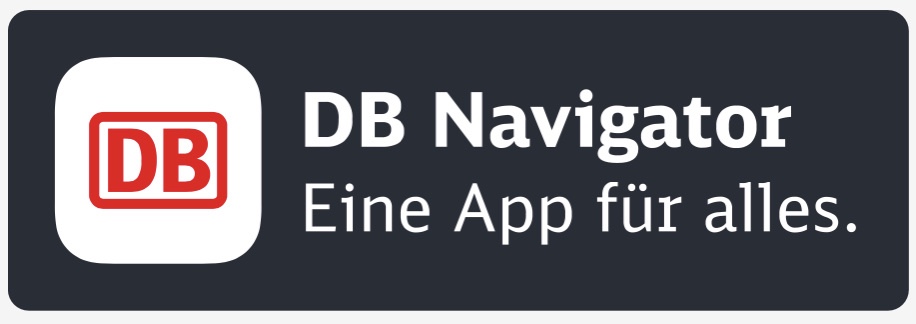
Using their DB Navigator app, I easily booked my train from Munich to Nuremberg, paid using my PayPal account, downloaded the ticket to my Wallet and to their app, and boarded my 9:42 am train. Which left the station at 9:42. Once on board, I was able to connect to their free wifi and use their Comfort Check-in, meaning the conductor knew I was there and did not bother to further disturb me for a ticket. So civilized, fast and efficient. We also arrived exactly on schedule. I wonder the last time Amtrak had such success?
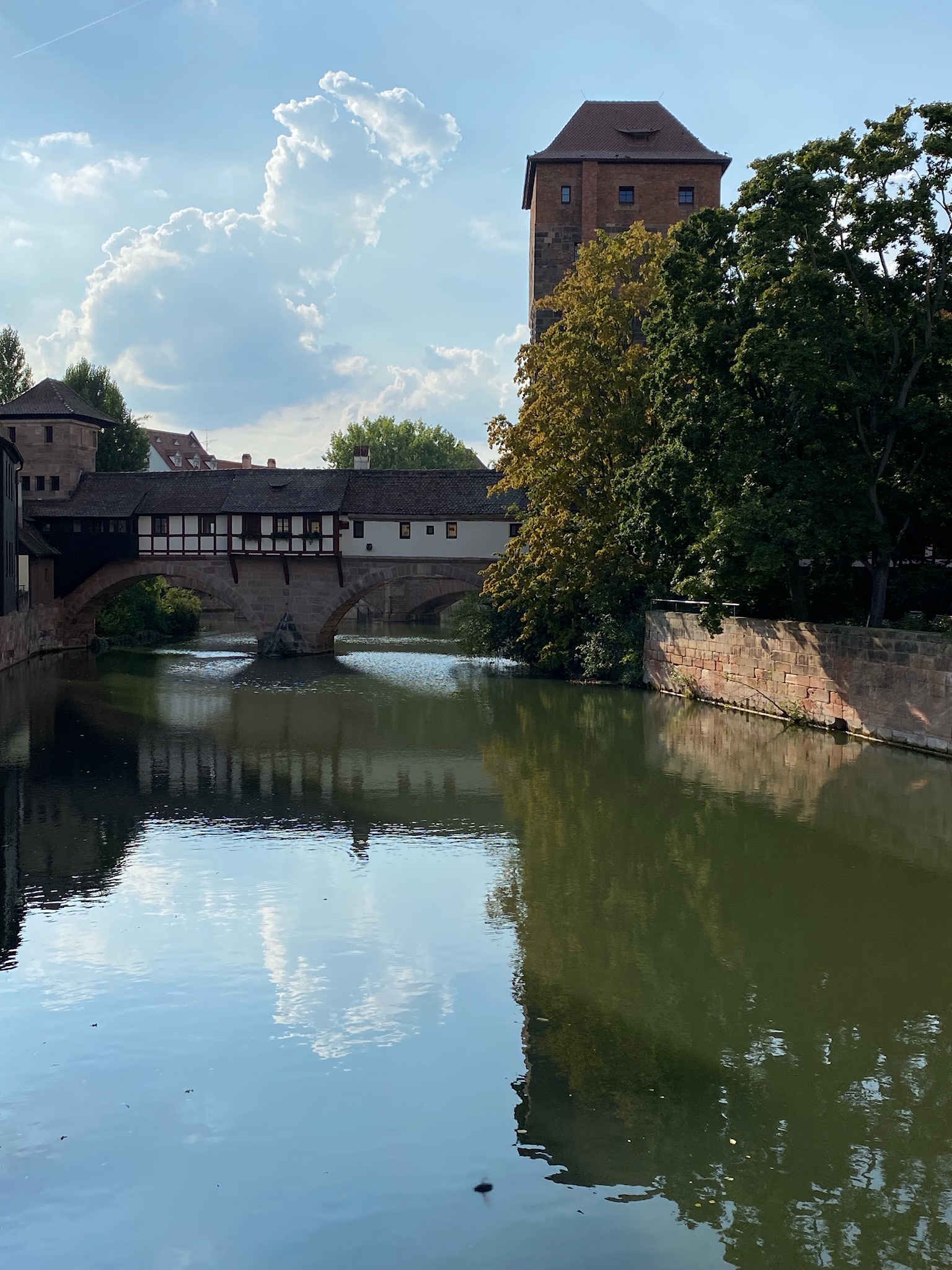
There are some cities or locations where one arrives and it is love at first sight. There is something about the skyline that captures the imagination. Nuremberg is just such a city. Though there are modern buildings in the way, Nuremberg Castle dominates the skyline as soon as one enters the ancient city gates. I leave my bag at the hotel and begin to explore.
Churches abound. I love to enter churches and witness what faith built. Oftentimes it is pretty spectacular. St. Lorenz is being renovated. The nave of the church was completed by around 1400 and centrally hung above the choir is the Angelic Salutation, a beautiful limewood sculpture carved in 1517. This is just one piece of priceless art that was removed to the Art Bunker below the Nuremberg Castle as a way to save it both from the Nazis and potential bombings. The stained glass is quite nice and there is a surviving rose window.

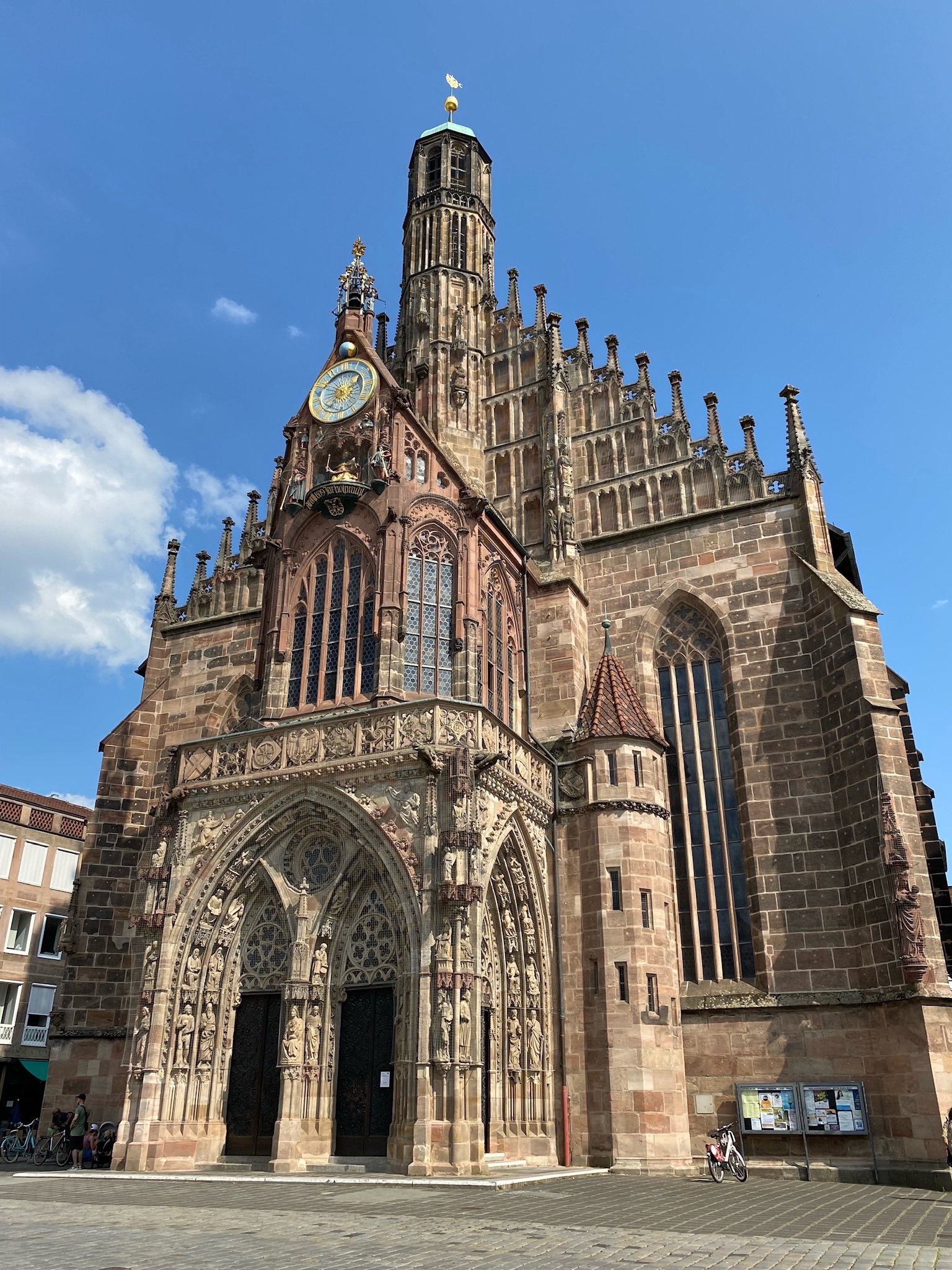
Frauekirche is in the main square of Hauptmarkt. It’s gothic facade, bell tower, and mechanical clock are distinctive. The church was begun about 1352 on the request of Charles IV, Holy Roman Emperor, over the site of a Jewish synagogue which was destroyed during a pogrom following an outbreak of the Black Death in 1349. Frauekirche is much restored as it and other churches here were heavily damaged during WWII bombing raids. One of the most notable features of the church is the 1506 mechanical clock and carved scene depicting the Holy Roman Emperor with the prince-electors which is activated at noon for an entertaining 6 minute show. A sequence follows of a procession of the electors around the figure of the Holy Roman Emperor followed by trumpeters and drummer, chimes and bells. An impressive show for something that has been on time for over 500 years.
St. Sebaldus is a gothic, medieval church, now Lutheran, which sits across from the old city hall. Construction began in 1225 and modifications were made over the centuries. With an impressive organ, stained glass and paintings, it is quite beautiful. Possibly most notable in the history of St. Sebaldus is the organists. From 1695-1706, Johann Pachebel was organist here and quite possibly created his well-known Canon in D while at St. Sebaldus. His son was also organist here for over 40 years beginning in 1719.
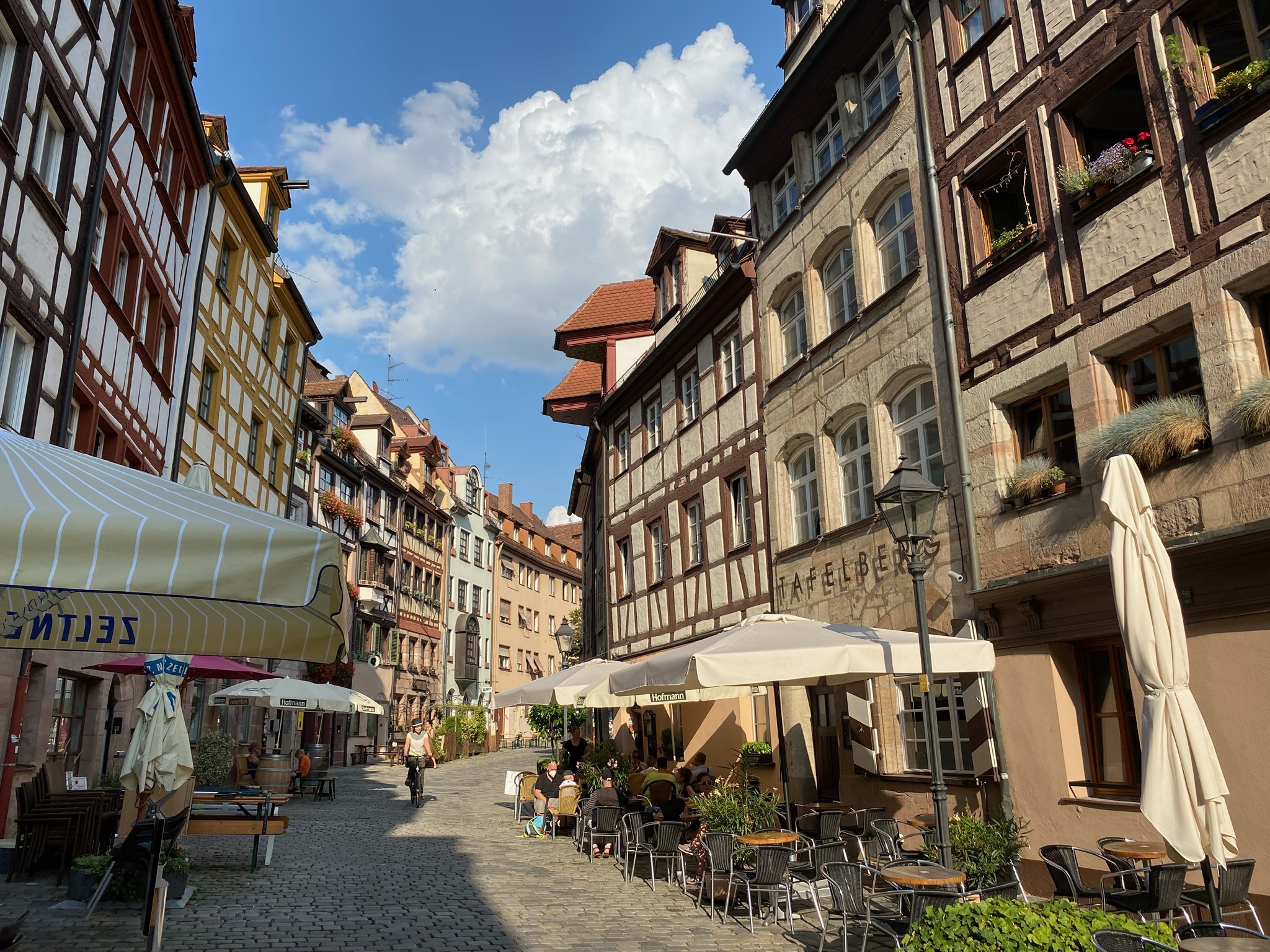
The whole of Nuremberg is a pleasure to walk. The Pegnitz River flows through the center of the city necessitating the need for bridges. Fortunately, the city built charming ones, including green parks and paths along its length. The cobblestone street of Weissgerbergasse is lined with wonderfully maintained half-timbered medieval homes adorned with festoons of bright geranium flower boxes. And a stroll of the winding alleys and along the old city walls with its numerous towers and historic gates will discover several gardens, parks and rose gardens scattered about.

The German National Museum focuses on art and culture and displays a vast variety of religious artifacts. It is unique in that the museum is itself an architectural achievement as it consists of a variety of buildings erected in different periods including the courtyard and Carthusian cloister of an ancient monastery and the neighboring church (being renovated). Fascinating exhibits included the two oldest globes in existence, charming pouring pitchers, and wonderful helmets and weapons. Several sections are currently Covid-closed but the museum is definitely worth visiting. Included is a special exhibit of the history of Davos (Switzerland). That’s the elite, health and ski resort of the Alps. The exhibit, though only in German, peaked my interest to learn more of Davos history beyond it just being a great ski and bobsled town that is consistently overlooked as a site of the Winter Olympics.
Not to miss just outside the GNM is the “Way of Human Rights” consisting of 27 white pillars and arch. Each pillar is inscribed with a short declaration of one of the 30 articles of the Universal Declaration of Human Rights both in German and one other language. It is simple and impactful. Dedicated in 1993, it’s mission statement “is both an indictment of the crimes against humanity committed by the National Socialists, and an admonition carved in stone to all people reminding them that human rights are still violated in many states all over the world.”
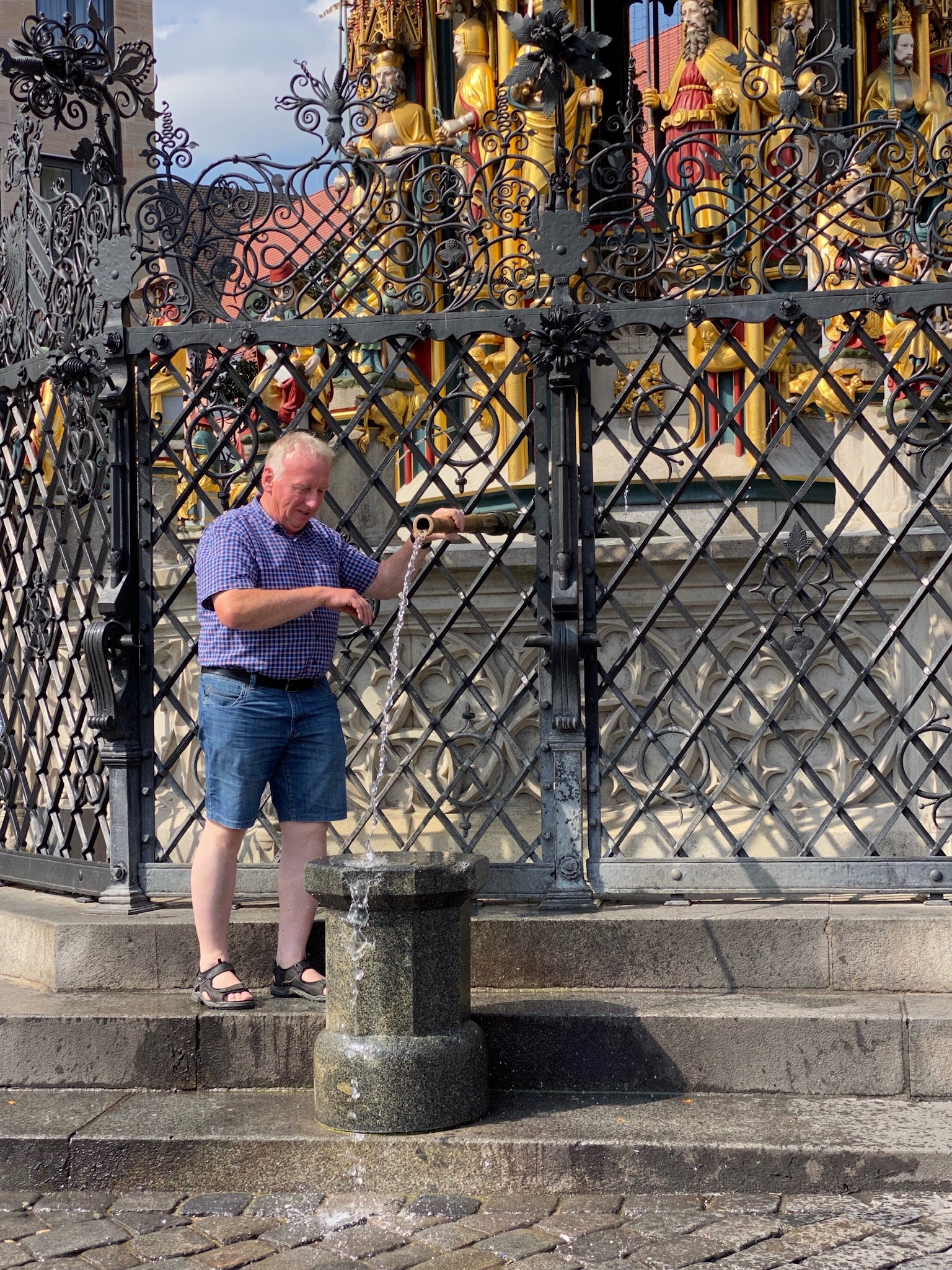
A perfect spot to enjoy the view, tolling of the bells and people watch is the Hauptmarkt which is the main plaza in a town boasting many popular plazas. There are several cafes and being a real “foody town” there are street vendors, numerous vendors of beautiful fruits, olives, nuts and vegetables, and lots of good choices on cafe menus. Pick a spot with a view of Frauekirche’s clock and tableaux, watch the people priming the medieval pumps of the ornate gothic Schoner Brunnen fountain, and enjoy a cool Hefeweizen.
0 Comments